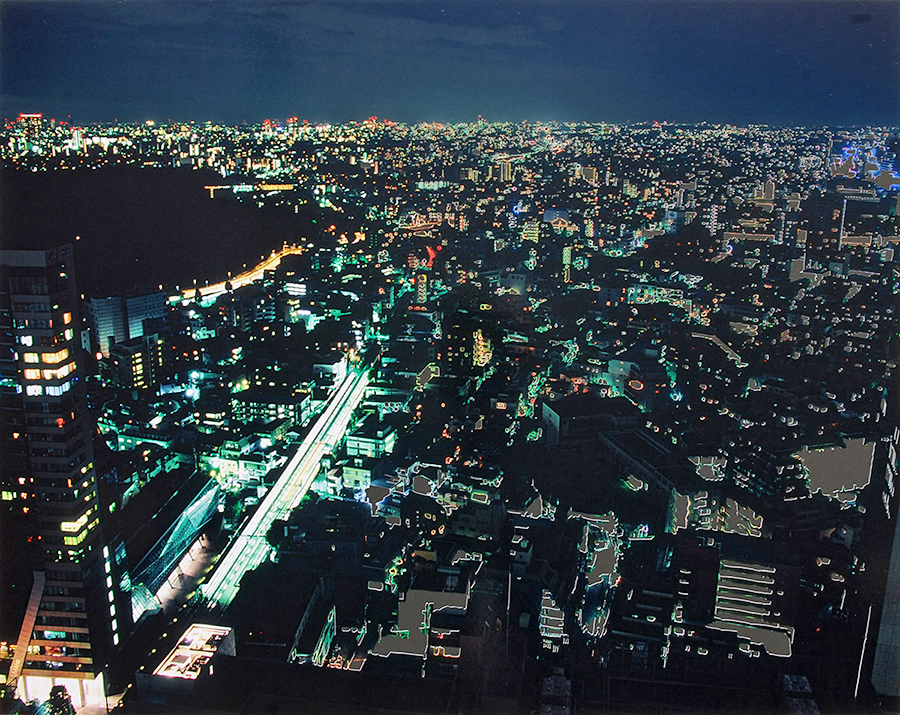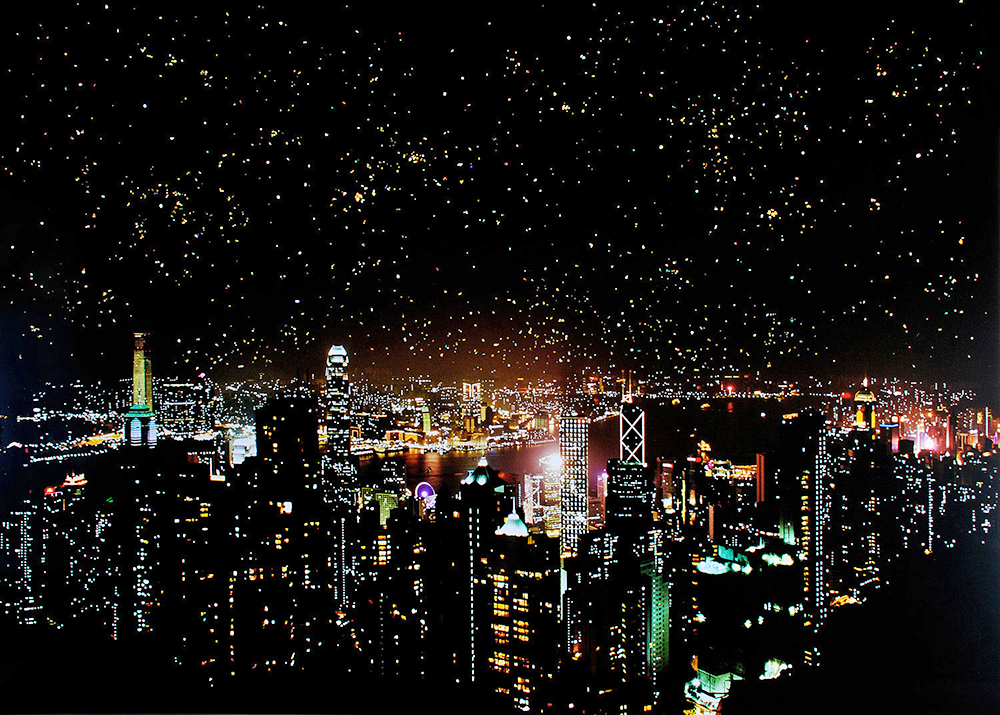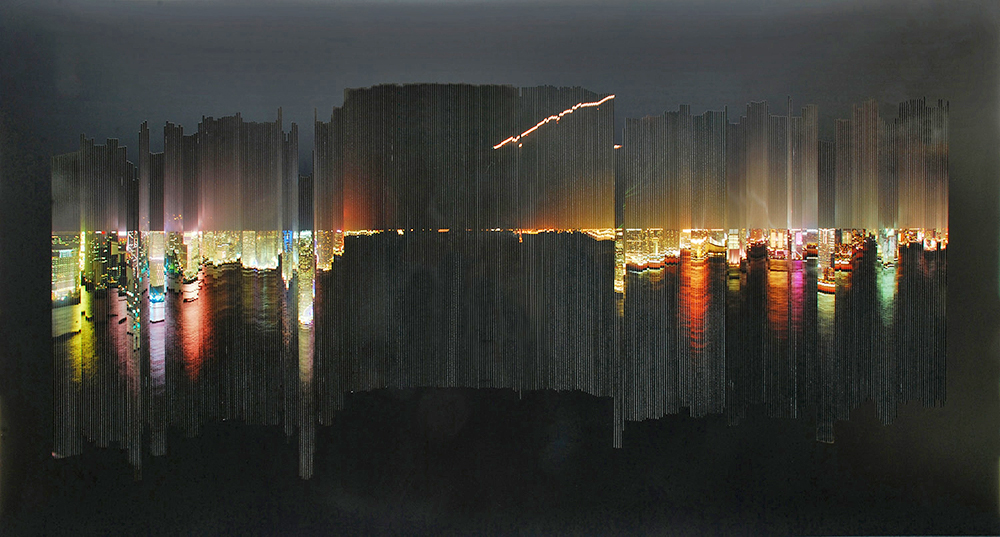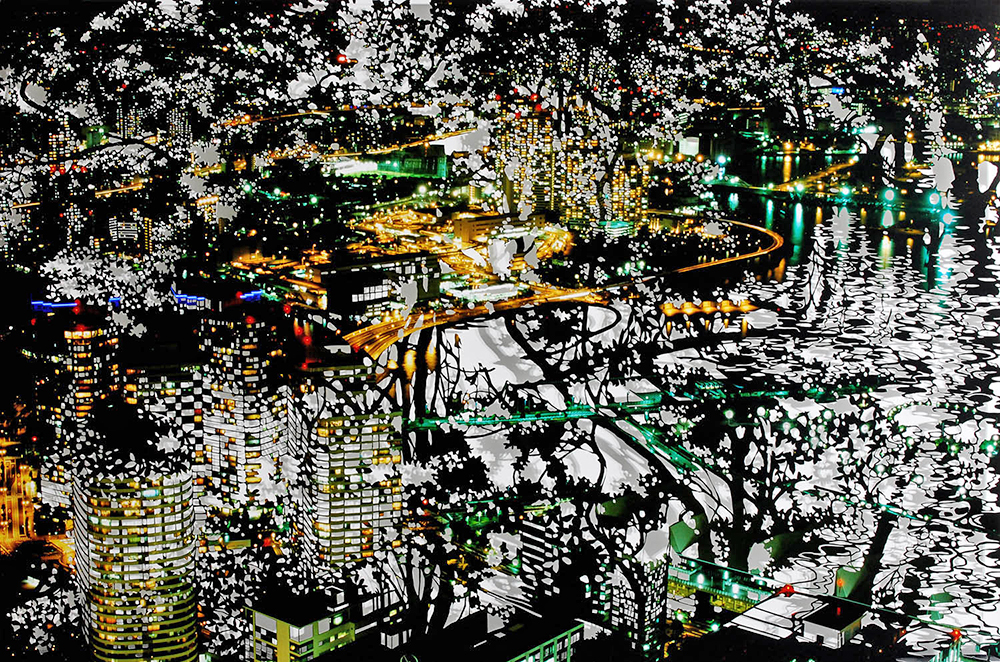Shows
Shu Ikeda’s “VOID”


Though Hiroshima-born Shu Ikeda’s transition from a floral focus to urban landscapes at the turn of the decade marked a momentous, diversifying step—both aesthetically and philosophically—for his blossoming career, it also carried a somber note. Like many of his compatriots, Ikeda was deeply affected by the devastating Tōhoku earthquake and tsunami, which struck Japan’s Iwate Prefecture and reverberated across the country, in 2011. The magnitude of the earthquake was greater than that of any other recorded in Japan’s history; it was so strong that it literally moved the position of the country’s main island and shifted the Earth on its axis.
The destruction was then followed by the meltdown of nuclear reactors at Fukushima Daiichi Nuclear Power Plant, which left millions of households in northeastern Japan powerless. It was from this void of darkness that the ideas behind Ikeda’s current exhibition at Hong Kong’s Blindspot Gallery, were sparked. Witnessing first hand the cataclysmic clash between man and nature led the artist to contemplate the relationship between humans, cities and the natural environment. In his practice, Ikeda explores the shadows and silhouettes of shapes and lights through his signature style of “painting with photography,” in which he makes delicate dissections in his photographic images to produce a collage of sorts. Light of the Remained (2014) features a nighttime aerial view of an urban area in Japan—where many of the buildings are uncharacteristically dark and some have been physically cut out of the photograph—which references the post-earthquake period when most cities in the country carried out planned power cuts to conserve electricity.

Ikeda concluded that the earthquake—this conflict between man and earth—was not a singular event, but that people's exploitation of the environment is leading to the downfall of civilization despite humankind’s desperate struggle to conserve both itself and nature. As Ikeda’s ideas gradually unfolded, so did his ambition. “I used to work with shapes and light, but now I want to explore more elements, to explore more of the external world, like situations and actual life,” he explained in a recent interview with ArtAsiaPacific. His new pursuits recently drew him to Hong Kong’s rapidly fluctuating cityscape, where the deconstruction and reconstruction of buildings and land suited his meticulous, additive and reductive methodology. Inspired by Hong Kong’s urban environment, he produced photo-collage pieces such as Endless Night (2015), where he dotted the city’s starless night sky with lights cut out from the buildings below, creating an idyllic view that is hard to come by in a city polluted by millions of manmade illuminations.
Displaying the ability to adapt his technical approach to the demands of ideology, in Mirror of Time (2015) Ikeda created an alternative cityscape from a photograph of Hong Kong’s nocturnal skyline. The 154-centimeter-wide image was cut into numerous three-millimeter-wide strips, which were rearranged so that the rooftops of the city buildings all aligned with the horizon. “In this way,” Ikeda noted, “it looks like the buildings are coming out of the water surface,” creating not only a shimmering mirage of the Hong Kong night-scape, but also an important and iridescent chart of its urban topography.


Another side to Ikeda’s style can be seen in Back to Reality (2014). In this piece the artist applies his background and expertise in depicting floral imagery, intertwining them with the Japanese cityscape to communicate—through cutting, collating and collaging—the relationship between man and nature as he imagines it. Though categorizing the act of cutting as “painting with photography” is a fundamental paradox—as cutting is traditionally a reductive process while painting is an additive one—the negative spaces that Ikeda creates on his photos are not empty and, instead, shapes in their own right. They are imagined spaces that open up a new, physical and cerebral dimension in his artwork, which he refers to as the “void.” It is at the pinnacle of this intersection between the real and surreal—where the two are in harmony and nothing is in need of being added or subtracted—that Ikeda considers his work complete.
“Void” is on view at Blindspot Gallery, Hong Kong, until August 29, 2015.








